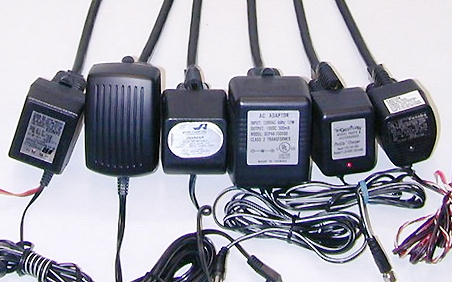
In the U.S., the step-down transformer on the utility pole is center-tapped to provide two 110-volt legs. This is called “split phase” and requires a third wire from the center tap into the dwelling (neutral) and a neutral wire from each outlet back to the service entrance of the building to connect to it.
On the other hand, 220-volt circuits and appliances do not require a neutral, although it is often included if some sub-component of the appliance uses 110 volts.)
In the U.S., most household appliances are designed for 110-volt power sources. Using a lower distribution voltage has some pros and cons. The advantage is that a lower voltage poses a lower risk of electrocution, while still providing sufficient power at an outlet for most appliances. The down side is that the lower the distribution voltage, the large the wire diameter that must be used to minimize wire losses.
So a 110-volt circuit requires more copper (less resistance) to serve its outlets to maintain the same line loss as a 220-volt system. Most households have several appliances that are designed to take advantage of the full 220 volts delivered by the utility company. These appliances have high current demands and the higher distribution voltage allows them to be served with a smaller wire gauge.
It’s unusual (but not unheard of) for sound reinforcement products to require a 220-volt outlet, at least in the U.S.
Many motorized appliances utilize AC in the form it’s delivered by the utility company. But other products (including sound reinforcement components) internally convert the delivered 110 volts AC to DC.
This is the very first step taken inside a product when power is delivered to it from an electrical outlet. The power supply provides the DC “rails” necessary to power the internal circuitry. These rail voltages can range from a few volts to hundreds of volts, depending upon the purpose of the product. Some power supplies are external to the product.

“Line lumps” and “wall warts” are commonplace in sound systems. These offer the advantages of mass production and more efficient certification, as well as keeping AC (and its potential audible side effects) out of a product. But external supplies can be inconvenient and proprietary, so consumers are split in their acceptance.
Battery-powered devices bypass the whole system and place a DC power source created by chemical reactions right where it’s needed – inside of the product. The disadvantage is that there is no way to replenish this source other than replacing it or running a wire to an external power source.
Why This Matters
Audio people need not be electricians, but we must know how power distribution works. The AC power distribution scheme that is thoroughly entrenched in the U.S. infrastructure can be intermittent, noisy and even lethal.
The common practice of plugging different parts of a sound system into different electrical outlets can have very negative audible side effects, such as “hum” and “buzz” over a loudspeaker.
Far more serious, an improperly grounded system can prove deadly. Perhaps you’ve heard tales of unsuspecting musicians who lay their lips on microphones while touching their guitar strings. This is no urban myth – it can happen without proper power practice.
